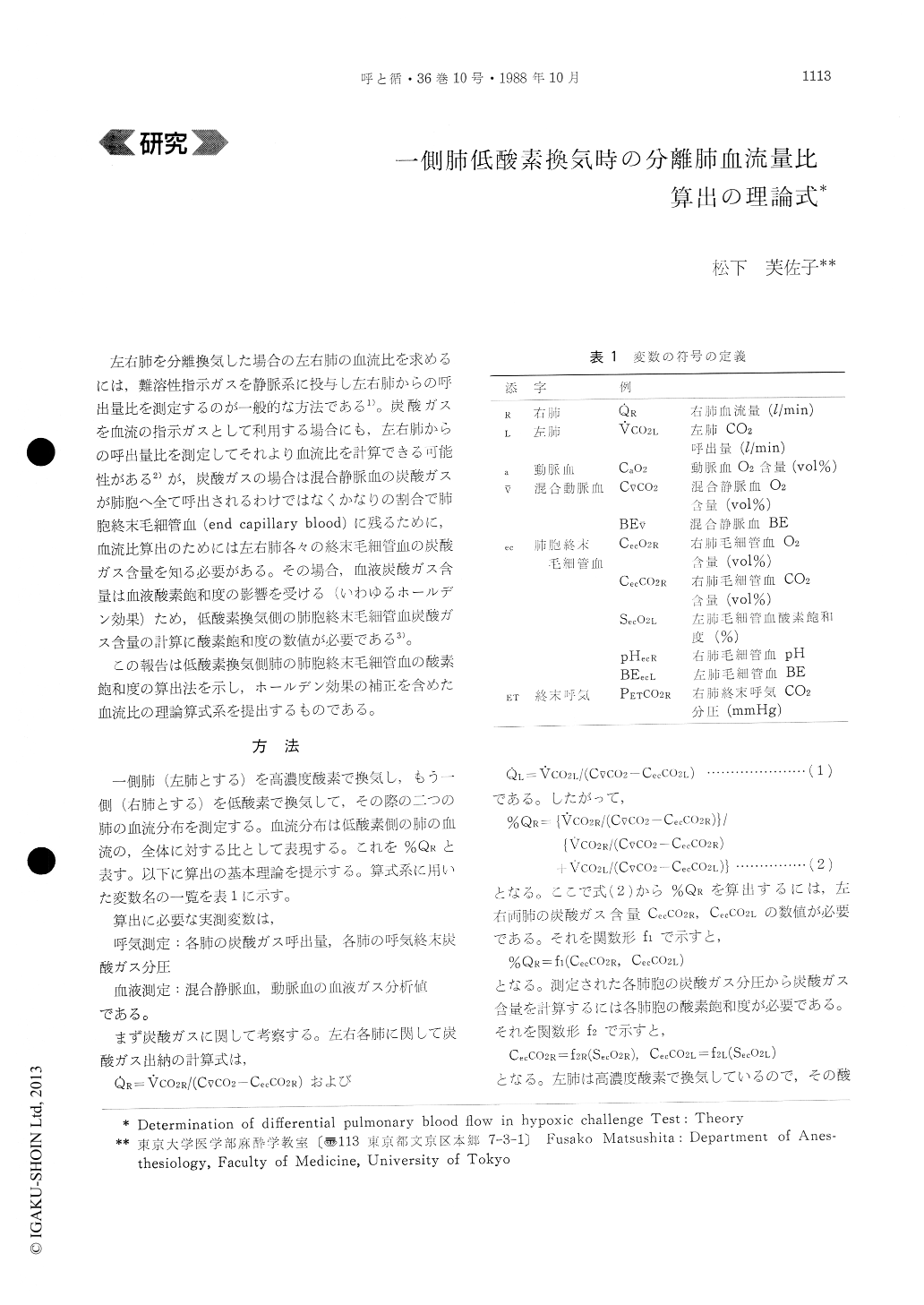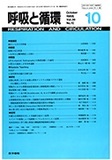Japanese
English
- 有料閲覧
- Abstract 文献概要
- 1ページ目 Look Inside
左右肺を分離換気した場合の左右肺の血流比を求めるには,難溶性指示ガスを静脈系に投与し左右肺からの呼出量比を測定するのが一般的な方法である1)。炭酸ガスを血流の指示ガスとして利用する場合にも,左右肺からの呼出量比を測定してそれより血流比を計算できる可能性がある2)が,炭酸ガスの場合は混合静脈血の炭酸ガスが肺胞へ全て呼出されるわけではなくかなりの割合で肺胞終末毛細管血(end capillary blood)に残るために,血流比算出のためには左右肺各々の終末毛細管血の炭酸ガス含量を知る必要がある。その場合,血液炭酸ガス含量は血液酸素飽和度の影響を受ける(いわゆるホールデン効果)ため,低酸素換気側の肺胞終末毛細管血炭酸ガス含量の計算に酸素飽和度の数値が必要である3)。
この報告は低酸素換気側肺の肺胞終末毛細管血の酸素飽和度の算出法を示し,ホールデン効果の補正を含めた血流比の理論算式系を提出するものである。
In this paper present author proposes a new me-thod to determine per cent blood flow to the lung challenged hypoxic (%Q) and oxygen saturation in end capillary blood of the lung (SecO2),, simultaneo-usly when one lung is normoxic (ventilated with 100% O2) and the other hypoxic.
There are two well-known relations, relation between %Q and CO2 content in end capillary blood (Cecco2) and relation between %Q and O2 content in end capillary blood (CecO2), that is, so-called mass balance equations. I found that the rela-tion between %Q and Cecco2 can theoretically be transformed to the relation between %Q and SecO2. This relation is given as a group of curves that shift with changes in end tidal CO2 partial pressure (PETCO2). The relation between %Q and CecO2 also can theoretically be transformed to the another rela-tion between %Q and SecO2. And also, this relation is given as a group of curves that shift with chan-ges in PETco2. In these transformations I used the KELMAN' program, CO2 equilibration curve, BE curve and ADAIR' equation. In the KELMAN's program the coefficients from VAN SLYKE & SENDROY' nomogram were employed. CO2 equili-bration curve and BE curve were derived from SIGGAARD-ANDERSEN' curve nomogram. These two relations between %Q and SecO2 are mutually independent, and so determine a point in SecO2- %Q plane, if PETCO2 is fixed. And this is the point wanted to be known.
Applying this method, for example, to the case in which one lung is ventilated with 100% O22 (me-asured PETco2=30 mmHg) and the other with 100% N2 (measured PETco2= 17 mmHg), a pair of values, 72. 3% for SecO2 and 24.3% for %Q, was determi-ned.

Copyright © 1988, Igaku-Shoin Ltd. All rights reserved.


